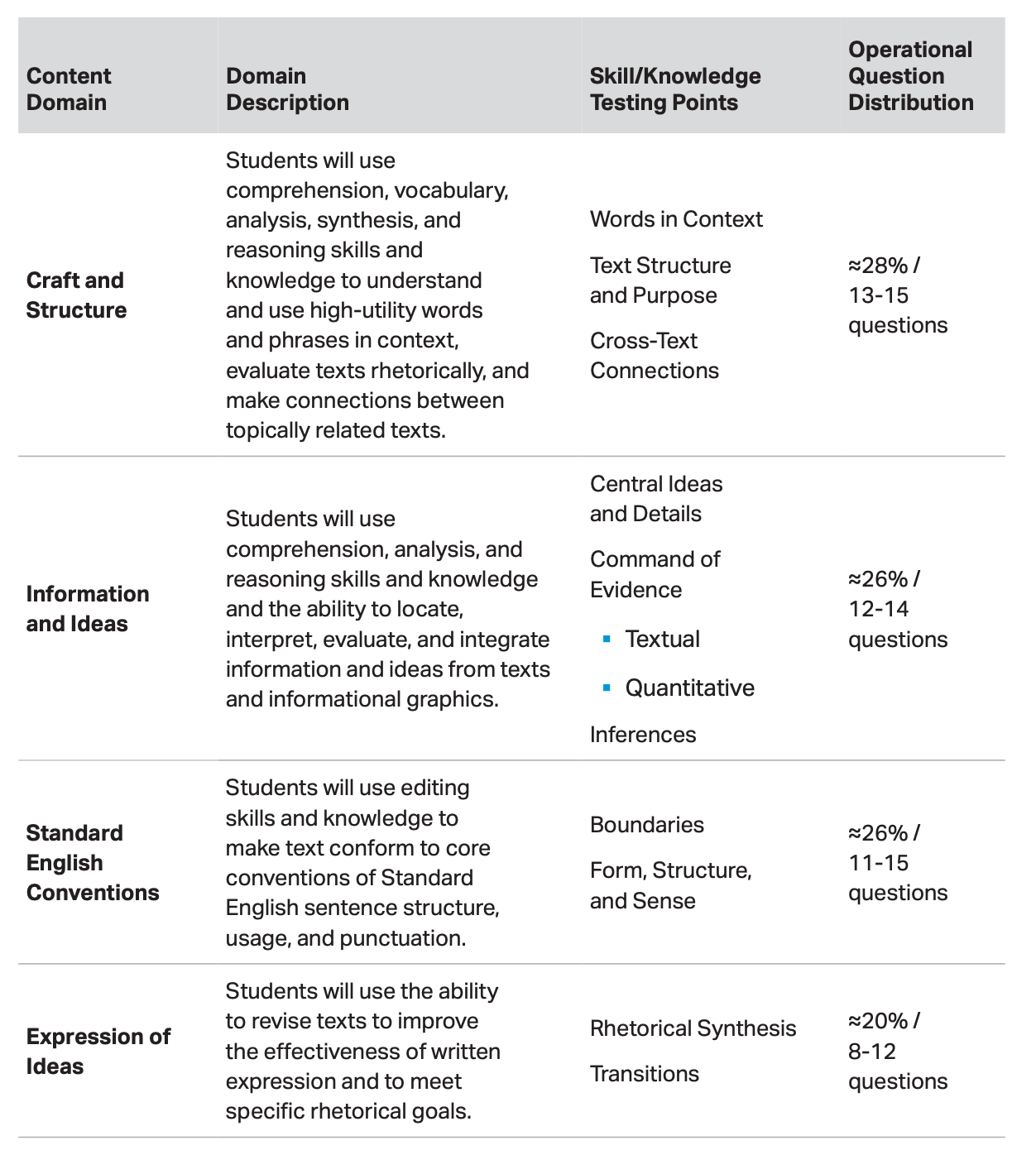Digital SAT Test Overview
Jul 1

Starting in 2023, the SAT® Suite of Assessments will transition to a digital format worldwide. This change is in response to feedback from our members and aims to better serve all stakeholders. The digital SAT Suite will maintain its core focus on assessing the critical knowledge and skills that are most relevant for college and career readiness. However, this isn't just a shift to digital; it’s an enhancement that leverages the benefits of digital testing, making the exams more accessible, secure, and relevant for both students and educators.
Digital SAT Specifications

Digital SAT Features
The digital SAT Suite will be delivered through a custom-built application developed by the College Board, building on the successful platform used for the 2021 digital AP® Exams. This tailored approach allows for prioritization of features essential to students and educators, flexibility to adapt to changing market needs, and seamless integration with College Board and partner systems for an enhanced user experience.
Key features of the digital testing application include:
Key features of the digital testing application include:
-
Mark for Review: Allows students to flag questions and revisit them within the test module.
-
Testing Timer: Features a countdown and a hide option, with a 5-minute alert before the module ends.
-
Calculator: A built-in graphing calculator is available for the Math section, although students may also use their own approved calculators.
-
Reference Sheet: Provides common formulas for the Math section.
-
Annotation Tool: Enables students to highlight and annotate parts of questions.
Reading & Writing
The Reading and Writing section of the digital SAT Suite assesses critical literacy skills essential for college and career success. It evaluates comprehension, rhetoric, and language use through multiple-choice questions. Students will read and analyze texts, revise for clearer rhetorical expression, and edit to align with Standard English conventions.
Reading & Writing Content Domains
Each Reading and Writing test module in the digital SAT Suite includes questions from four domains: Craft and Structure, Information and Ideas, Standard English Conventions, and Expression of Ideas. Questions testing similar skills within the first three domains are grouped together to minimize context switching and are arranged from easiest to hardest. This organization helps students manage their time effectively and demonstrate their knowledge fully. Standard English Conventions questions are also sequenced from easiest to hardest, regardless of the specific convention tested.
-
Craft and Structure: Measures the comprehension, vocabulary, analysis, synthesis, and reasoning skills and knowledge needed to understand and use high-utility words and phrases in context, evaluate texts rhetorically, and make connections between topically related texts
-
Information and Ideas: Measures comprehension, analysis, and reasoning skills and knowledge and the ability to locate, interpret, evaluate, and integrate information and ideas from texts and informational graphics (tables, bar graphs, and line graphs)
-
Standard English Conventions: Measures the ability to edit texts to conform to core conventions of Standard English sentence structure, usage, and punctuation
-
Expression of Ideas: Measures the ability to revise texts to improve the effectiveness of written expression and to meet specific rhetorical goals
Reading & Writing Content Domains and Question Distribution

Math
The Math section of the digital SAT Suite assesses essential mathematical knowledge and skills critical for college and career readiness. It covers algebra, advanced math, problem-solving and data analysis, and geometry (excluding trigonometry for the PSAT 8/9). Students will encounter multiple-choice and student-produced response questions designed to test their fluency, understanding, and application of key math concepts necessary for postsecondary success.
Math Content Domains
Each test module includes questions from all four content domains, organized from easiest to hardest. This arrangement helps test takers optimally demonstrate their abilities. A breakdown of question distribution by content domain is detailed in Table 3.
-
Algebra: Measures the ability to analyze, fluently solve, and create linear equations and inequalities as well as analyze and fluently solve equations and systems of equations using multiple techniques
-
Advanced Math: Measures skills and knowledge central for progression to more advanced math courses, including demonstrating an understanding of absolute value, quadratic, exponential, polynomial, rational, radical, and other nonlinear equations
-
Problem-Solving and Data Analysis: Measures the ability to apply quantitativereasoning about ratios, rates, and proportional relationships; understand and apply unitrate; and analyze and interpret one- and two-variable data
-
Geometry and Trigonometry (SAT, PSAT/NMSQT, PSAT 10)/Geometry (PSAT 8/9): Measures the ability to solve problems that focus on area and volume; angles, triangles, and trigonometry; and circles (NOTE: PSAT 8/9 doesn’t include trigonometry questions.)
Math Content Domains & Question Distribution

Scoring
The digital SAT Suite assessments provide three scores: a total score, which is the sum of two section scores, and individual scores for the Reading and Writing section and the Math section. Note that subscores and cross-test scores are not reported in the digital format.

Subscribe to our newsletter
Thank you!
Policy Pages
Copyright © DITO 2024
